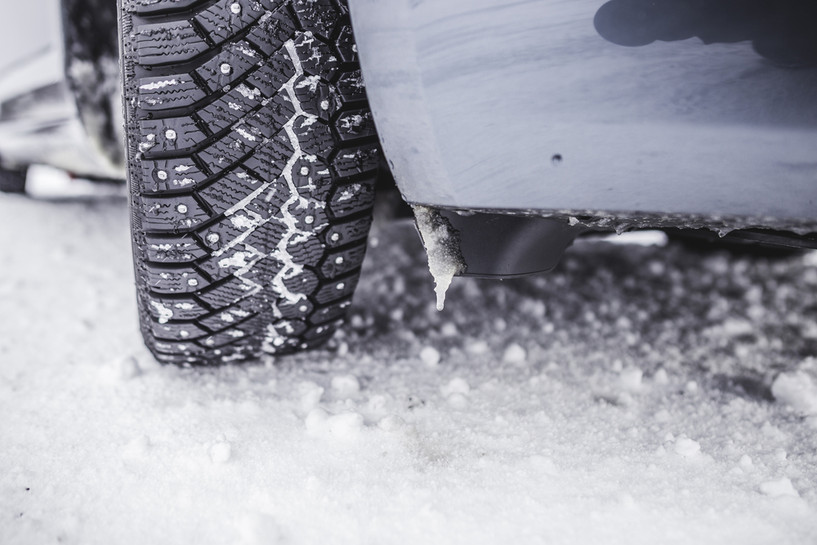Tires are always an important consideration for anyone who drives a classic car on the roads regularly, and this is especially so during the coldest parts of the year. Tires become even more important here due to elements like snow, ice and others, and ensuring your vehicle has the right tires is vital for both your own safety and the care of the vehicle itself.
At Andersen Restoration Parts, we're here to provide an unmatched selection of classic car restoration parts that help our clients keep their classic cars on the road. We offer everything from control arm bushing kits and shaft kits to ball joint sets, rebuild kits and much more. What are some key tire-related considerations for any classic car owner who will be driving their vehicle in cold weather? Here are several tips.
Keeping Separate Sets
Many people keep a separate set of winter tires for their classic car. This is often the best solution, as winter tires provide a higher level of traction and grip in extreme weather conditions. However, it's important to note that these tires can wear more quickly than other types of tire – so if you're using winter tires, make sure to inspect them regularly throughout the season.
In fact, for some, several different sets of tires may be needed. All-season tires are a great choice for those who live in areas with light or moderate snowfall, but they don't offer the same levels of grip and traction that winter tires do.
Should You Use Specialty Snow Tires?
Depending on a few factors, certain classic car owners may opt for specialty snow tires. These are designed to provide extra traction and grip on icy or snow-covered roads, and they do offer more stability while driving in these conditions. However, they also tend to wear out more quickly than other kinds of tires, so you'll need to factor this into your purchasing decision.
In addition, there are some classic vehicles that are not conducive to the use of specialty snow tires, either due to lack of clearance for larger winter tire sizes or the fact that the car may not have been designed to handle certain types of tyres. Always check with your classic car professional before investing in something like this.
Managing Unique Vehicle Tires
As many classic car owners are well aware, certain older vehicles require special tires to ensure proper fit and performance. When selecting winter tires for these vehicles, it's important to keep in mind the unique specifications required. Make sure to check with an expert before making a purchase so you know exactly what your vehicle needs.
Finally, be aware of any potential limitations that could affect your classic car’s performance. For instance, some vehicles may not be able to handle speeds above a certain level when using winter tires. Always keep this in mind and plan accordingly.
Factoring in Pressure
The pressure of your car's tires is another important element to look at when driving in cold weather. As temperatures drop, so too does the air pressure in your tires – and if this pressure is allowed to get too low, it can create issues when braking and cornering.
Making sure your car's tires are correctly inflated before taking any trips during cold weather is a must in order to increase safety. The correct tire pressure for your vehicle should be marked on the inside of the driver's door frame.
Regularly Checking Tire Tread
As you prepare to drive your classic car in cold weather, it's also important to check the tread on each of your tires. This is especially true if you're using winter tires – because the added grip they provide can lead to uneven wear across all four tires.
It's best practice to check the tread depth of each tire before and after each season – and if you ever notice that a tire is wearing unevenly or excessively quickly, it's recommended to have them professionally assessed.
Studs or Chains?
What about if you live or drive in an especially treacherous area and need a bit more grip? In this case, tire studs or chains may be necessary. These are typically added to your current tires in order to increase traction during wet, snow-covered roads. This is an especially popular option for those who live in areas where heavy snowfall is common.
However, it's important to note that tire studs and chains can be difficult to install and remove, and they may cause excessive wear on the tires themselves. As such, it's important to check with a classic car expert before investing in any of these products.
Tires are an integral part of driving any vehicle – but especially for classic car owners. During the winter months, making sure your vehicle is properly outfitted with winter tires can help keep you safe and ensure your car performs at its best. With the right knowledge and resources, you can easily find the ideal winter tires for your classic vehicle.
For more on this, or to learn about any of our classic car restoration parts and services, our team at Andersen Restoration parts is standing by. Whether you're looking for an answer to a technical question or need advice on winter tires, we are here to provide the answers and guidance you need. Contact us today and let's discuss how we can help.

